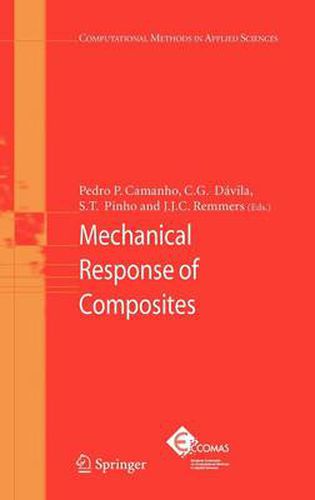Readings Newsletter
Become a Readings Member to make your shopping experience even easier.
Sign in or sign up for free!
You’re not far away from qualifying for FREE standard shipping within Australia
You’ve qualified for FREE standard shipping within Australia
The cart is loading…






This title is printed to order. This book may have been self-published. If so, we cannot guarantee the quality of the content. In the main most books will have gone through the editing process however some may not. We therefore suggest that you be aware of this before ordering this book. If in doubt check either the author or publisher’s details as we are unable to accept any returns unless they are faulty. Please contact us if you have any questions.
Themethodologyfordesigninghigh-performancecompositestructuresisstill evo- ing. The complexity of the response of composite materials and the dif?culties in predicting the composite material properties from the basic properties of the c- stituents result in the need for a well-planned and exhaustive test program. The recommended practice to mitigate the technological risks associated with advanced composite materials is to substantiate the performance and durability of the design in a sequence of steps known as the Building Block Approach. The Building Block Approach ensures that cost and performance objectives are met by testing greater numbers of smaller, less expensive specimens. In this way, technology risks are assessed early in the program. In addition, the knowledge acquired at a given level of structural complexity is built up before progressing to a level of increased complexity. Achieving substantiation of structural performance by testing alone can be p- hibitively expensive because of the number of specimens and components required to characterize all material systems, loading scenarios and boundary conditions. Building Block Approachprogramscan achieve signi?cant cost reductionsby se- ing a synergy between testing and analysis. The more the development relies on analysis, the less expensive it becomes. The use of advanced computational models for the prediction of the mechanical response of composite structures can replace some of the mechanical tests and can signi?cantly reduce the cost of designing with composites while providing to the engineers the information necessary to achieve an optimized design.
$9.00 standard shipping within Australia
FREE standard shipping within Australia for orders over $100.00
Express & International shipping calculated at checkout
This title is printed to order. This book may have been self-published. If so, we cannot guarantee the quality of the content. In the main most books will have gone through the editing process however some may not. We therefore suggest that you be aware of this before ordering this book. If in doubt check either the author or publisher’s details as we are unable to accept any returns unless they are faulty. Please contact us if you have any questions.
Themethodologyfordesigninghigh-performancecompositestructuresisstill evo- ing. The complexity of the response of composite materials and the dif?culties in predicting the composite material properties from the basic properties of the c- stituents result in the need for a well-planned and exhaustive test program. The recommended practice to mitigate the technological risks associated with advanced composite materials is to substantiate the performance and durability of the design in a sequence of steps known as the Building Block Approach. The Building Block Approach ensures that cost and performance objectives are met by testing greater numbers of smaller, less expensive specimens. In this way, technology risks are assessed early in the program. In addition, the knowledge acquired at a given level of structural complexity is built up before progressing to a level of increased complexity. Achieving substantiation of structural performance by testing alone can be p- hibitively expensive because of the number of specimens and components required to characterize all material systems, loading scenarios and boundary conditions. Building Block Approachprogramscan achieve signi?cant cost reductionsby se- ing a synergy between testing and analysis. The more the development relies on analysis, the less expensive it becomes. The use of advanced computational models for the prediction of the mechanical response of composite structures can replace some of the mechanical tests and can signi?cantly reduce the cost of designing with composites while providing to the engineers the information necessary to achieve an optimized design.